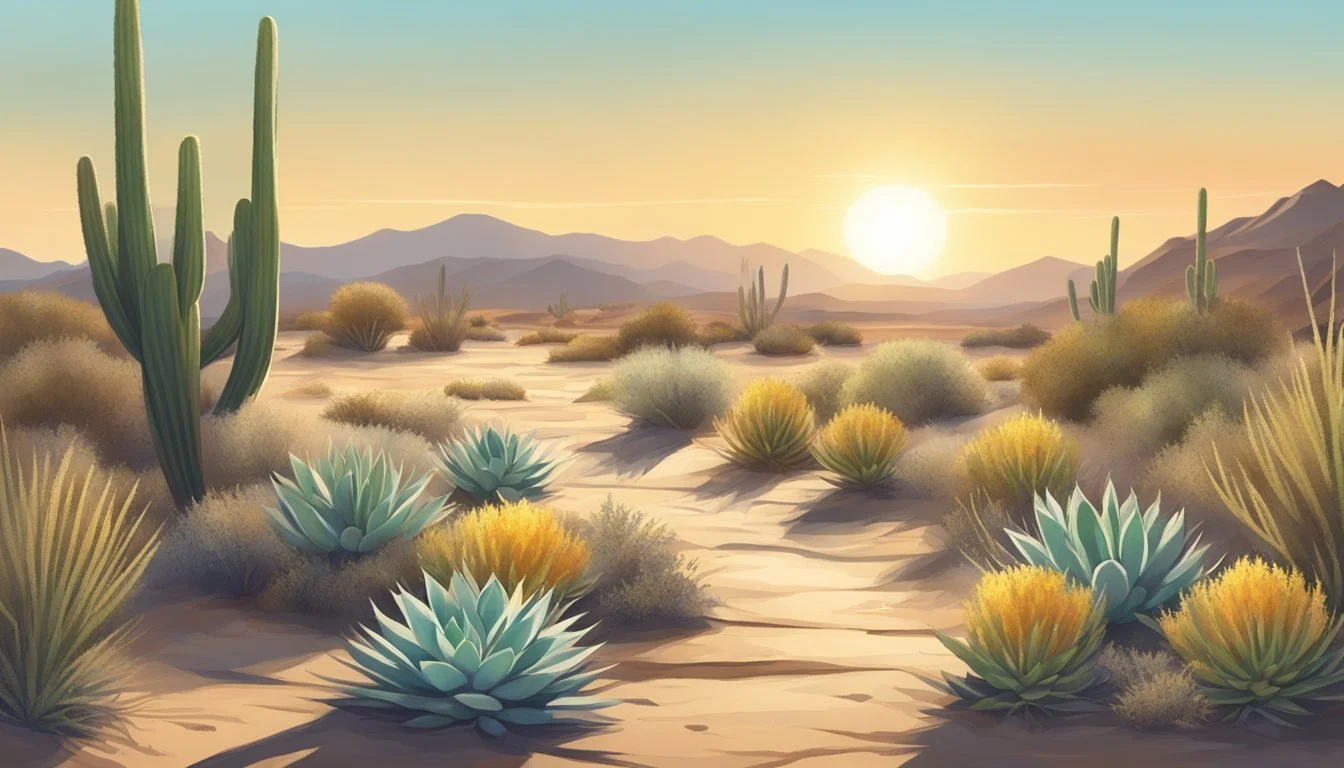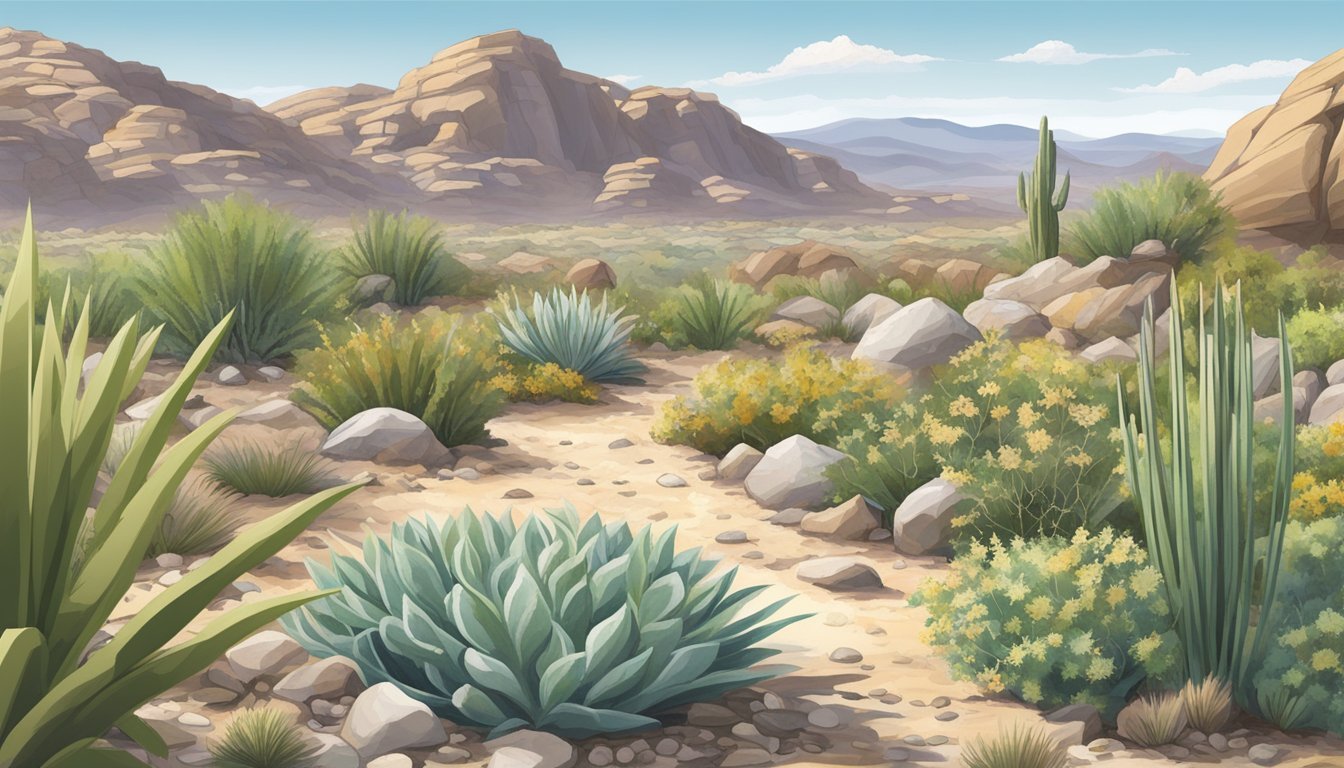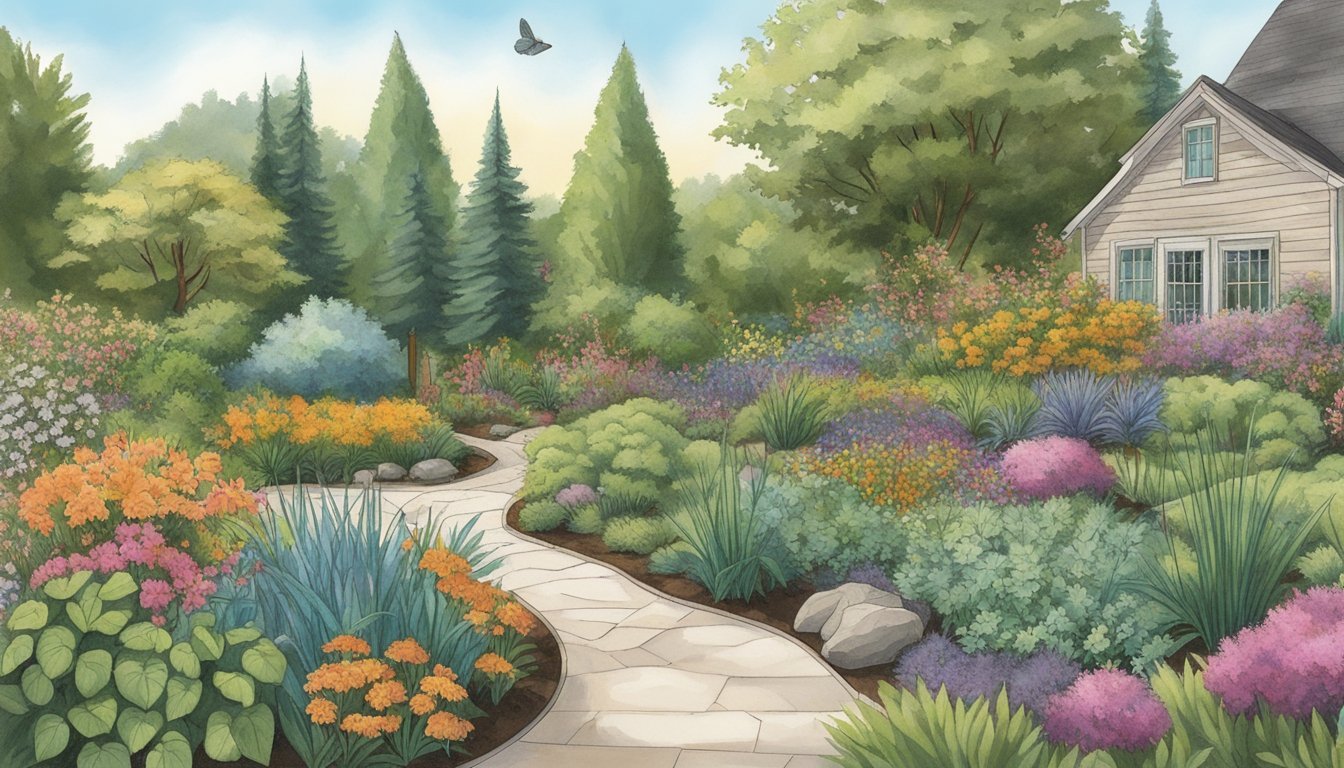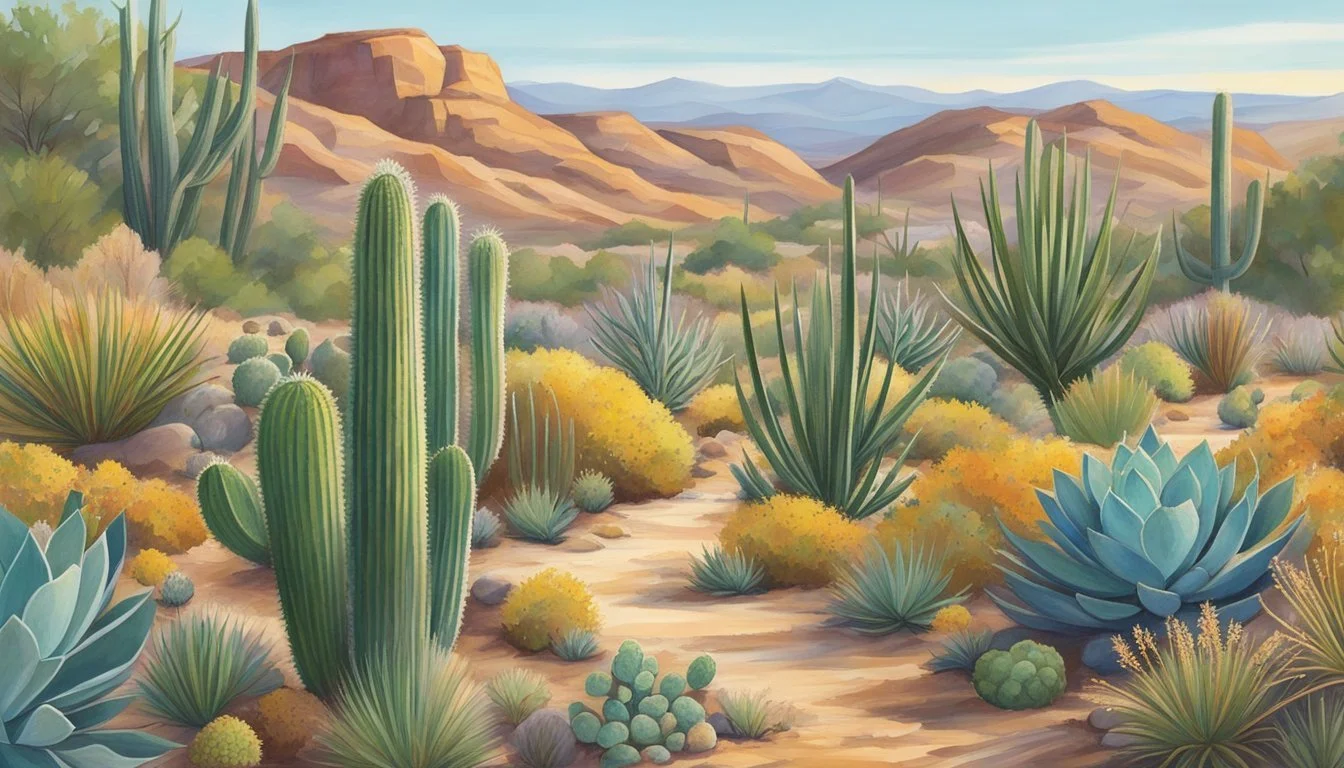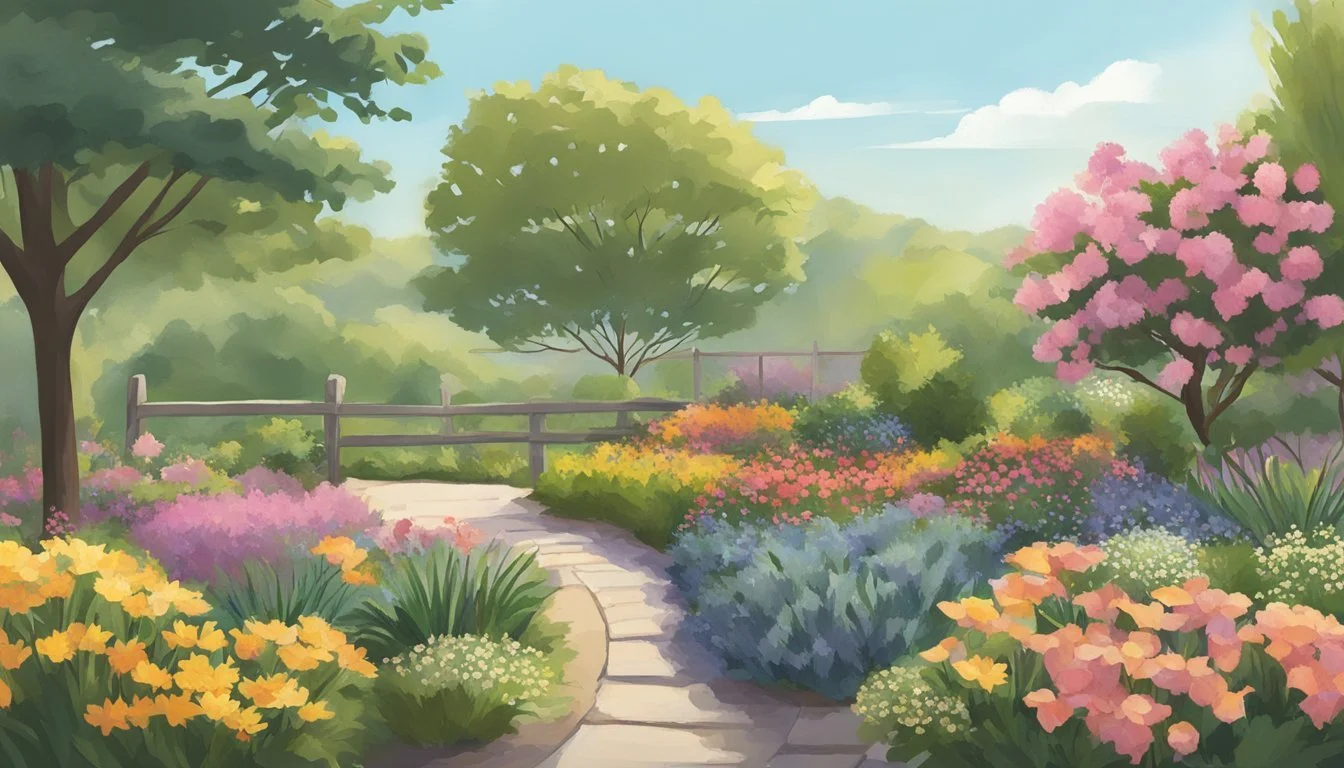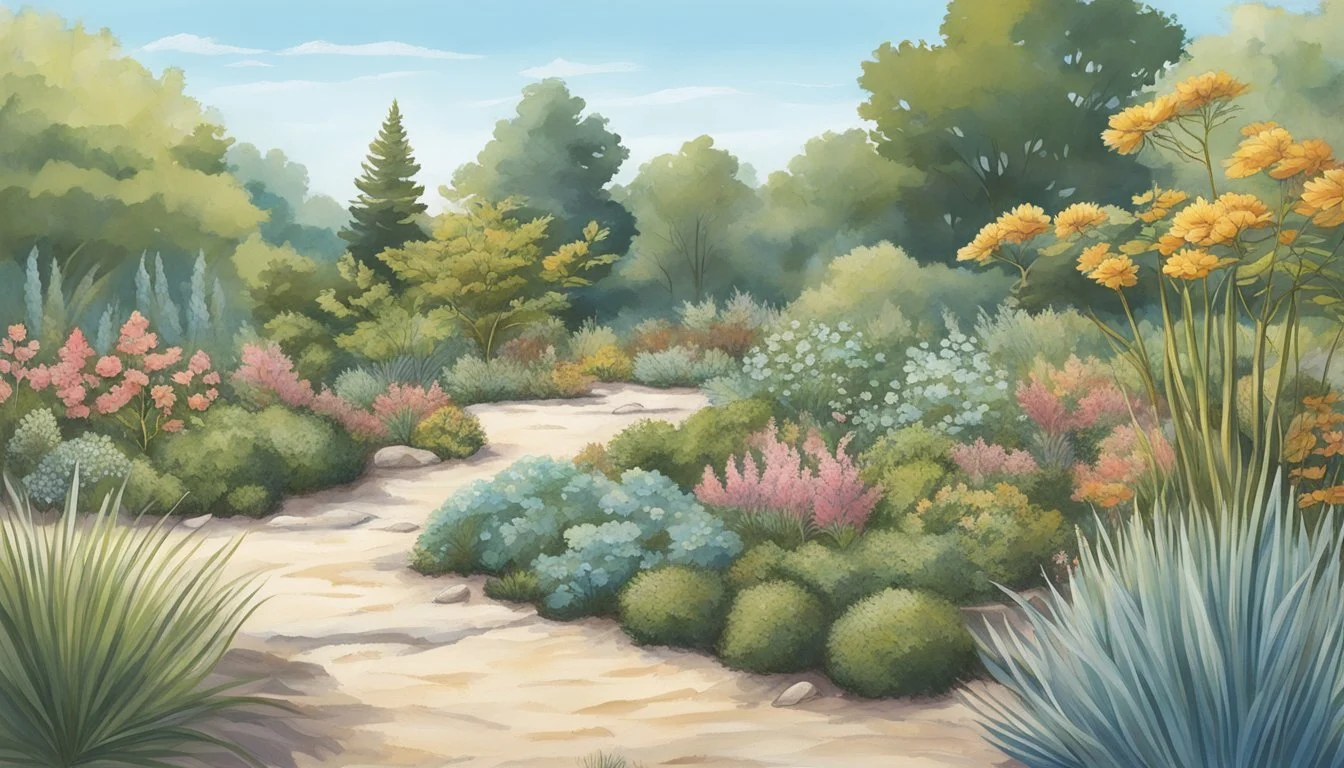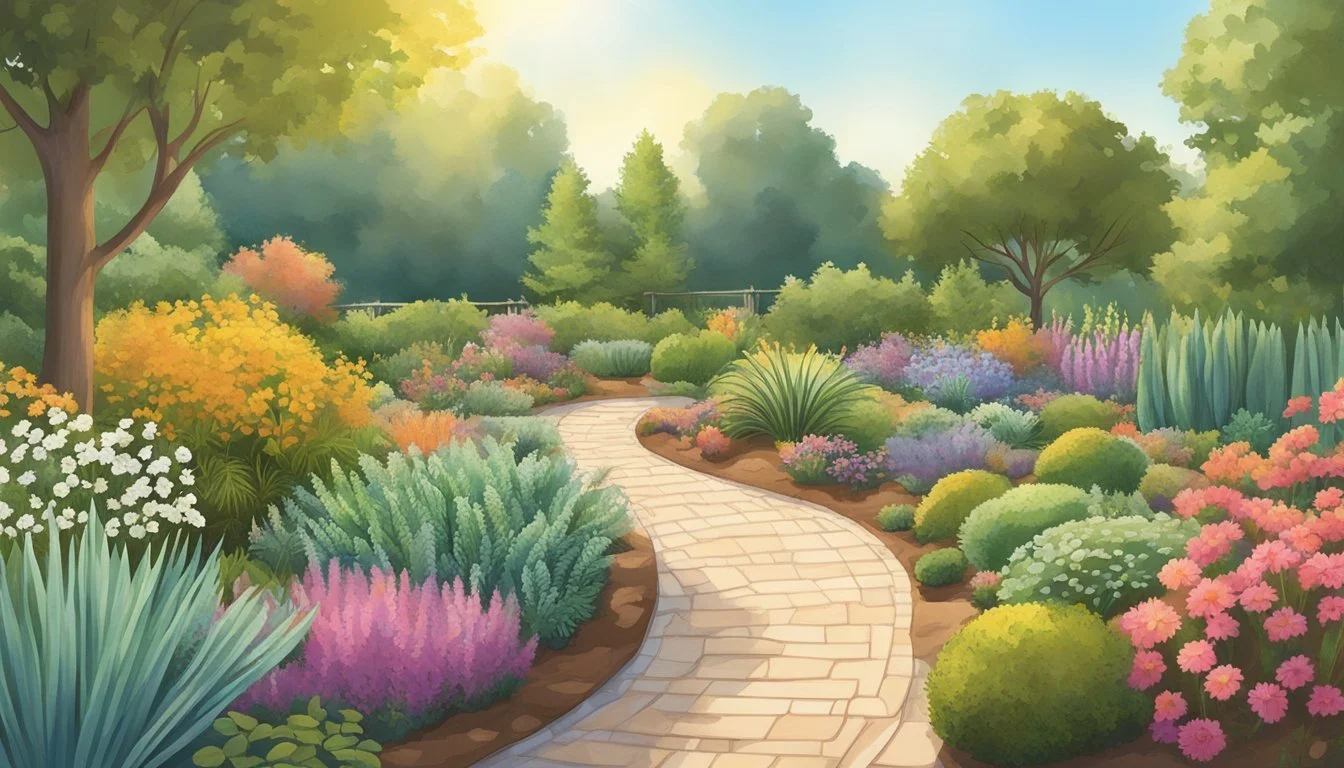Drought-Tolerant Plants in Maryland
Thriving Flora for Dry Climates
Gardening in Maryland's climate presents unique challenges, especially during the hot and dry summer months. During periods of low precipitation, maintaining a lush, vibrant garden can be both water-intensive and time-consuming. Drought-tolerant plants offer a sustainable solution for Maryland gardeners looking to create a resilient landscape able to withstand the area's occasional water scarcity.
Drought-resistant plants have adapted to thrive with minimal water, making them an eco-friendly addition to any Maryland garden. These plants often feature deep root systems that tap into lower soil moisture or leaves designed to minimize water loss, ensuring they maintain their beauty even in arid conditions. Incorporating a selection of native species not only enhances the local ecosystem by providing habitats for wildlife but also reduces the garden's overall water consumption.
Understanding Drought-Tolerant Plants
Drought-tolerant plants are species that have adapted to survive in conditions with limited water availability. These adaptations are increasingly critical as climate change impacts Maryland's landscapes.
Defining Drought Tolerance
Drought tolerance refers to a plant's ability to withstand dry conditions. In Maryland, plants such as the Black-eyed Susan (Rudbeckia hirta) and Butterfly Weed (Asclepias tuberosa) exhibit physical traits like deep root systems and waxy leaf coatings to minimize water loss. Drought-tolerant plants often have leaves that reflect sunlight and reduced leaf surface area to curb water evaporation.
Importance in Climate Change
Climate change is causing more frequent and severe droughts, making drought-tolerant plants particularly significant. Through their inherent resilience, these plants maintain their physiological functions and continue to support their ecosystems despite water scarcity. Research suggests plants like Switchgrass (Panicum virgatum) are not only drought-resistant but can also help sequester carbon, a practice that mitigates the effects of climate change.
Benefits to Landscapes and Ecosystems
Incorporating drought-tolerant plants into Maryland landscapes offers multiple benefits. They reduce the need for irrigation, lowering water consumption and maintenance costs. Ecologically, these plants provide essential habitats and food sources for local wildlife. Moreover, they help stabilize soil and reduce erosion, contributing to a healthier ecosystem overall.
Selecting the Right Drought-Tolerant Plants for Maryland
In choosing suitable drought-tolerant plants for Maryland landscapes, gardeners must consider the region's distinct climate conditions, favor native species that thrive locally, and understand soil preferences to ensure successful, sustainable gardens.
Considering Maryland's Climate
Maryland experiences a range of climatic conditions, from humid summers to cold winters. For robust plants that can withstand such variability, selecting species accustomed to the state's typical weather patterns is crucial. When considering Maryland native plants, gardeners should seek out those that have evolved to survive the hot and often humid summer months with less water.
Native Plants vs. Non-Natives
Native plants are inherently well-suited to Maryland's environment. They have adapted to local conditions over thousands of years and therefore are more likely to withstand the extremes of climate change and require less water. Plants like Black-Eyed Susan and Yarrow not only conserve water but also contribute to the local ecosystem by providing habitat and food for wildlife.
Soil Preferences and Conditions
The performance of drought-tolerant plants is partially determined by the soil conditions they are planted in. Maryland soils vary widely, but most natives are adapted to the local soils and will thrive if the conditions simulate their natural habitats. For example, well-draining soil is essential for drought tolerance, as it prevents root rot during heavy rains and retains sufficient moisture during dry spells. Gardeners should also incorporate organic matter into the soil to enhance its water retention capabilities and provide nutrients for the plants.
Incorporating these aspects into the selection process will help ensure that the chosen drought-tolerant plants can thrive in Maryland's diverse landscape.
Best Practices for Caring for Drought-Tolerant Plants
Drought-tolerant plants are a practical choice for gardens in Maryland, requiring less water and generally lower maintenance. By adopting effective watering techniques, managing sun exposure, and controlling pests and weeds, one can cultivate a thriving, water-efficient landscape.
Watering Techniques
Proper irrigation is critical for the establishment and long-term success of drought-tolerant plants. They should be watered deeply but infrequently, promoting root growth that can reach moisture stored lower in the soil. During the establishment phase, water them every 7 to 10 days, then gradually reduce the frequency. Employing drip irrigation or soaker hoses minimizes evaporation and directs water to the root zone, where it's most needed.
Managing Sun Exposure
Even though these plants are well-adapted to hot and sunny conditions, they still require proper sun management to prevent drought stress. Full-sun plants typically need at least six hours of sunlight daily. To avoid the intense heat of the midday sun, consider placement where there's partial afternoon shade, ensuring the plant's foliage remains vibrant and resilient against the heat.
Controlling Pests and Weeds
Drought-tolerant plants tend to be hardy, but they are not immune to pests and weeds. Regular monitoring can catch issues early before they escalate. Natural pest deterrents, such as neem oil or insecticidal soaps, are preferred for maintaining an eco-friendly garden. Mulching around plants not only retains soil moisture but also suppresses weed growth, reducing competition for water and nutrients.
Designing a Drought-Resistant Landscape
In the context of Maryland's varied climate, designing a drought-resistant landscape involves strategic plant placement, selection of plants for their color and texture, and the incorporation of non-plant elements to create a functional and appealing garden.
Plant Placement Strategies
When arranging drought-tolerant plants in a Maryland garden, one must consider the microclimates created by sun exposure and wind patterns. Plants requiring more moisture should be situated in areas where the soil remains wetter for longer, such as shaded or lower elevation parts of the landscape. Conversely, species that thrive in arid conditions are best placed in full sun areas where they can tolerate drier soil. Implementing such placement tactics ensures each plant optimizes the natural conditions present, leading to a sustainable and resilient garden.
Creating Visual Interest with Colors and Textures
A visually stimulating garden is not solely about the diversity of plant species but also their varied colors and textures. Drought-tolerant plants offer a rich palette including silvery greens, vibrant purples, and striking blues. Incorporating ornamental grasses can add soft textures, while succulents provide a bold, architectural form. Maryland gardeners can create an aesthetically pleasing landscape that requires minimal water by thoughtfully pairing plants that provide contrasting colors and textures.
Incorporating Non-Plant Elements
Beyond plant selection, the inclusion of non-plant elements such as rocks, boulders, and gravel can enhance the beauty and functionality of drought-resistant landscapes. These elements reduce the area requiring irrigation and maintenance, while also adding architectural interest to the garden. Water features designed for recirculation can add a tranquil sound and attract wildlife, without the need for excessive water use. By blending these hardscape components with selected drought-tolerant flora, one can design a comprehensive, low-water-use landscape that thrives in Maryland's climate.
Drought-Tolerant Plant Varieties in Maryland
Maryland's varied climate demands landscaping with resilience. The following plant varieties thrive in its drought-prone areas, requiring minimal water once established.
Shrubs and Trees
In choosing shrubs and trees for Maryland landscapes, the emphasis is on species with low water needs. The Sweet Pepperbush (Clethra alnifolia) not only conserves water but also enchants with its scented blooms, making it an excellent choice for pollinator gardens. Maryland's native Spicebush (Lindera benzoin) is another shrub that's well-adapted to local conditions, with the added benefit of being a host plant for spicebush swallowtail butterflies.
Perennials and Grasses
Drought-resistant perennials add color and depth to any garden. The Black-Eyed Susan (Rudbeckia hirta), Maryland's state flower, is a steadfast option, with its golden petals and dark centers adding a vibrant touch. In terms of grasses, consider adding Native Grasses like Switchgrass (Panicum virgatum), which stands up well to dry conditions and adds both texture and movement to a garden space. Additional details about these and other perennials can be gleaned from recommended native plants resources.
Ground Covers
Ground covers are invaluable for their ability to retain soil moisture. Green and Gold (Chrysogonum virginianum), a perpetually green groundcover, is noted for its drought tolerance and cheerful yellow flowers. It qualifies as a practical and attractive ground cover. For those interested in augmenting their landscape with drought-resistant plantings, expert advice and suggestions tailored to specific needs can be acquired from local landscaping specialists.
Supporting Wildlife with Drought-Tolerant Plants
In the varied climate of Maryland, integrating drought-tolerant native plants into a garden proves not only water-efficient but also vital for supporting local wildlife, such as butterflies, pollinators, and hummingbirds.
Attracting Pollinators and Beneficial Insects
Coreopsis spp., commonly known as Tickseed, aren't just resilient against dry spells – they are also celebrated for their vibrant, daisy-like blooms that produce nectar, enticing both butterflies and bees. Another steadfast choice is the Echinacea purpurea, or Purple Coneflower, whose distinctive cone-shaped centers offer rich resources for a variety of pollinators. Echinacea's durability in the face of drought makes it an intelligent addition for a Maryland gardener aiming to support ecological health and biodiversity.
Providing Habitats for Birds and Small Mammals
Drought-tolerant native plants fulfill more than the nectar needs of hummingbirds and pollinators; they also serve as crucial habitats for birds and small mammals. Plants like the robust Purple Coneflower provide seeds favored by birds, especially goldfinches, while also creating sheltered spaces for small wildlife. Emphasizing native, water-wise vegetation in garden designs not only conserves precious water resources but also ensures that birds and mammals can find refuge and sustenance in even the driest conditions.
Specific Drought-Resistant Plant Profiles
In Maryland, certain plants have adapted to thrive with minimal water, offering gardeners resilient and colorful options for landscaping. These species are not only drought-resistant but also contribute to local ecology by providing habitat and food for wildlife.
Butterfly Weed (Asclepias Tuberosa)
Butterfly Weed is a vibrant perennial known for its bright orange flowers which bloom in summer. It is a favorite among pollinators, especially butterflies, playing a critical role in the lifecycle of the Monarch butterfly. Asclepias Tuberosa thrives in full sun and is adept at managing long periods without rain, making it a suitable choice for Maryland gardens. Resistant to deer, it adds a burst of color while requiring minimal care.
Black-Eyed Susan (Rudbeckia Hirta)
Black-Eyed Susan stands out with its golden yellow petals and a distinctive dark brown center. Commonly found in Maryland, this wildflower is hardy and adjusts well to a variety of soil types. Rudbeckia Hirta is known for its capability to withstand hot and dry conditions, particularly during intense summer months. By planting Black-Eyed Susan, gardeners can expect a low-maintenance plant that perennially returns, offering a welcoming environment for local fauna.
Blue False Indigo (Baptisia Australis)
Blue False Indigo boasts striking blue flowers and has the ability to fix nitrogen in the soil, improving soil fertility. Preferring full to partial sun, Baptisia Australis is another drought-resistant option for the Maryland landscape. When established, it needs very little water and is generally free from deer browsing. It grows into a lush bush, with flowering spikes that can elevate the aesthetic of any garden space.
Seasonal Considerations and Planting Time
Timing and seasonal awareness are crucial for establishing drought-tolerant plants in Maryland. Choosing the right moment to plant can ensure that plants establish stronger root systems to withstand variable weather conditions throughout the year.
Best Time to Plant in Spring
In Maryland, the ideal time for planting drought-tolerant species is after the last frost in spring, which generally occurs by May. Spring presents milder temperatures and more predictable precipitation, creating optimal conditions for root development. Early planting allows plants to establish before the full intensity of summer heat.
Preparing for Summer Heat
As temperatures rise and the heat intensifies, plants need to be well-established to cope with the stress of summer sun. It is critical to minimize the risk of plant stress by ensuring they are in the ground well before the hottest months. Adequate mulching can help retain soil moisture and protect root systems.
Transitioning to Fall
By late summer and early fall, the harsh conditions begin to subside, offering a second opportunity for planting. However, gardeners must ensure that new plantings have enough time to establish before the onset of cold winter temperatures. Strategic placement, such as in areas with some afternoon shade, can safeguard young plants from residual heat while they acclimate.
Resources and Further Reading
When seeking information on drought-tolerant plants in Maryland, resources provided by the University of Maryland Extension Services offer valuable guidance; additionally, local gardening groups and communities serve as platforms for exchanging firsthand experiences and knowledge.
University of Maryland Extension Services
The University of Maryland Extension provides comprehensive resources for conserving water in landscapes, including information on drought-resistant plants suitable for Maryland's climate. They detail ways to cope with weather extremes and maintain water supplies, water quality, and infrastructure.
Local Gardening Groups and Communities
Gardening enthusiasts in Maryland can find support and tips from local gardening groups and communities. These groups often share insights about plants that thrive in the state's varied conditions, focusing on species that require minimal watering.
Frequently Asked Questions
Selecting plants that thrive in dry conditions can be vital for maintaining a healthy, resilient garden, especially in climates prone to drought. This section answers common queries regarding drought-tolerant flora suitable for Maryland's unique weather patterns.
What are some popular drought-tolerant shrubs native to Maryland?
Exemplary options include the smooth hydrangea and the fragrant sumac. These species adapt well to Maryland's environment, conserving water effectively during dry spells. For detailed specifics on caring for these shrubs, the University of Maryland Extension provides valuable information on conserving water in your landscape.
Can you list drought-tolerant perennials suitable for Maryland's climate?
Astilbe, also known as false spirea, and the Black-eyed Susan thrive as perennials in Maryland. These plants can often resist dry weather, making them excellent choices for long-lasting, low-water gardens. Great American Landscapes offers insights on drought-resistant plants that are suitable for Maryland summers.
What native grasses in Maryland are resistant to drought conditions?
Little bluestem and switchgrass are notable native grasses that are well-equipped to handle drought. Their deep root systems make them ideal candidates for sustainable landscaping within the region. Rooted In Nature provides additional information on best drought-tolerant plants for Maryland landscaping.
Which ground covers are native to Maryland and can withstand periods of drought?
The Allegheny pachysandra and the bearberry are two native ground cover plants that perform well in dry conditions. These species offer both resilience to drought and aesthetic appeal to any garden space in Maryland. Birds and Blooms highlights top drought-tolerant plants that can withstand dry weather.
What are the best options for drought-tolerant landscaping plants in Maryland?
For a drought-resistant landscape, consider incorporating the Eastern red cedar or the American holly. Such species are well-adapted to Maryland's varying climate and are known for their ability to prosper with minimal watering. The University of Maryland Extension's resource on recommended native plants for Maryland offers insights into suitable choices.
Are there any drought-resistant plants that are particularly recommended for Maryland's Zone 6?
The butterfly milkweed and Joe-Pye weed are particularly resilient in USDA Hardiness Zone 6. These species are recommended for their drought tolerance and compatibility with Maryland's climate. Information on plant hardiness and suitability can be found by considering the specific environmental conditions of Maryland's Zone 6.

